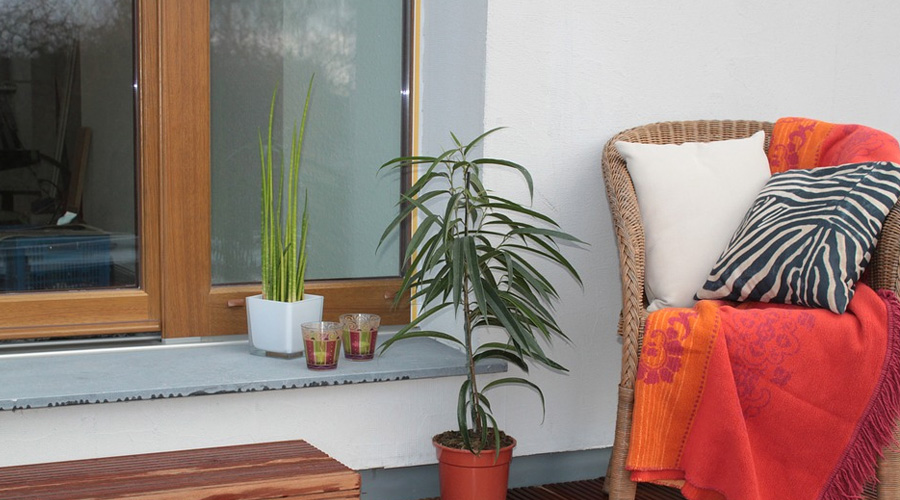Question 1:
What is the primary purpose of A/B testing in e-commerce?
- A) To compare the performance of two different marketing teams
- B) To determine which version of a webpage or element performs better in terms of a specific goal
- C) To check the functionality of the website on different browsers
- D) To estimate the website traffic for a given period
Answer: B) To determine which version of a webpage or element performs better in terms of a specific goal
Question 2:
Before conducting an A/B test, what is crucial to define?
- A) The color scheme of the website
- B) The hypothesis for the test
- C) The website’s loading speed
- D) The number of website visitors last year
Answer: B) The hypothesis for the test
Question 3:
Which of the following elements is commonly tested in e-commerce A/B testing?
- A) The CEO’s biography on the About Us page
- B) The website’s domain name
- C) The call-to-action (CTA) button color on a product page
- D) The company’s annual report
Answer: C) The call-to-action (CTA) button color on a product page
Question 4:
What does it mean if the results of an A/B test are statistically significant?
- A) The website’s design is modern and visually appealing.
- B) The results are likely due to chance.
- C) The difference in performance between the two versions is likely not due to chance.
- D) The test needs to be run again because the results are inconclusive.
Answer: C) The difference in performance between the two versions is likely not due to chance.
Question 5:
When planning an A/B test, why is it important to test one variable at a time?
- A) To increase the website’s speed
- B) To make the test more expensive and time-consuming
- C) To accurately measure the impact of that specific variable on the outcome
- D) To impress the company’s stakeholders
Answer: C) To accurately measure the impact of that specific variable on the outcome
Question 6:
What is a best practice for setting the duration of an A/B test?
- A) Ending the test as soon as a difference is observed
- B) Running the test indefinitely to collect as much data as possible
- C) Setting the duration based on achieving a sufficient sample size for statistical significance
- D) Conducting the test only during business hours
Answer: C) Setting the duration based on achieving a sufficient sample size for statistical significance
Question 7:
How should e-commerce sites implement the winning variation from an A/B test?
- A) By immediately replacing all website elements with the winning variation
- B) Gradually, starting with the homepage and then every page sequentially
- C) By applying the changes site-wide and monitoring the impact on relevant metrics
- D) By conducting a survey to ask customers if they liked the winning variation
Answer: C) By applying the changes site-wide and monitoring the impact on relevant metrics
Question 8:
After an A/B test, what is a constructive next step if the variant performed significantly better than the control?
- A) Discontinue A/B testing since you’ve found a winning formula
- B) Revert back to the control to maintain consistency
- C) Implement the successful variant and plan follow-up tests to further optimize
- D) Sell the results to competitors
Answer: C) Implement the successful variant and plan follow-up tests to further optimize
Short-Answer Questions on A/B Testing in E-commerce
Question 1
You’ve noticed that the conversion rate on your e-commerce site’s product page is lower than industry standards. Describe how you would design an A/B test to improve this metric. Include what element you would test, your hypothesis, and how you would measure success.
Question 2
After conducting an A/B test on your checkout process, you find that Variant B (simplified checkout process) has a higher conversion rate than Variant A (the original process). Explain how you would analyze the test data to ensure the results are statistically significant and the steps you would take to implement Variant B site-wide.
Question 3
Your A/B test on email marketing campaigns (Variant A: promotional discount code vs. Variant B: free shipping offer) resulted in higher open rates for Variant B but higher overall sales from Variant A. Discuss how you would interpret these results and what actions you might take to optimize future email campaigns.
Question 4
Imagine you are testing two different landing page designs for a new product launch. Variant A features a customer testimonial prominently, while Variant B highlights a product usage video. Both variants show an increase in engagement, but Variant B leads to more direct inquiries. How would you determine which variant to implement, considering both engagement and conversion as critical metrics?
Question 5
Describe a scenario where running simultaneous A/B tests could lead to skewed results. What precautions would you take to avoid interference between tests and ensure the validity of your findings?
Sample Answers
Answer 1
To improve the conversion rate on the product page, I would test the impact of adding detailed product specifications vs. a more narrative-style description (storytelling about the product’s benefits and uses).
Hypothesis: “Providing a storytelling-style product description will increase the conversion rate by making the product benefits more relatable to customers.”
Success Measurement: Compare conversion rates between the two variants, with a significant increase in the storytelling variant indicating success.
Answer 2
To analyze the data for statistical significance, I would use a chi-square test for conversion rates between Variant A and B, ensuring the p-value is below 0.05 for significance.
If significant, I’d gradually implement Variant B, starting with a small percentage of traffic and monitoring performance metrics closely before fully transitioning to ensure it maintains a higher conversion rate across the broader audience.
Answer 3
The higher open rates for Variant B suggest that customers are more enticed by free shipping offers, but the higher sales from Variant A indicate that a promotional discount code drives more purchases.
I would consider combining both strategies in future campaigns or segmenting the audience to target users with the offer most likely to drive their conversion.
Answer 4
While Variant B increases direct inquiries, suggesting higher interest, the final decision should consider the campaign’s primary goal.
If direct sales are the priority, Variant A might be preferable despite lower engagement.
However, implementing Variant B could be more beneficial for long-term brand engagement and lead generation.
A follow-up test focusing on conversion optimization for those who showed interest in Variant B could be a valuable next step.
Answer 5
Running simultaneous A/B tests on elements that affect each other, such as page layout and CTA placement on the same page, can lead to skewed results because changes in one element can influence user reactions to the other.
To avoid this, I would ensure tests are isolated, not testing related elements concurrently, and use proper segmenting to ensure that each user group is only exposed to one variation at a time.
Group Project Presentation: A/B Test Design Challenge for “Gourmet Delights”
Introduction
Our group has developed an A/B test for “Gourmet Delights,” a hypothetical e-commerce site specializing in premium and artisanal foods.
The focus of our test is the product detail page for one of their top-selling items: handcrafted chocolate truffles.
Test Objective
The primary objective is to increase the conversion rate on the product detail page for the handcrafted chocolate truffles.
Element to Test
We have chosen to test the impact of incorporating user-generated content (UGC), specifically customer reviews and photos, on the product detail page.
Hypothesis
Our hypothesis is that adding a section for customer reviews and photos directly on the product detail page, just below the product description, will increase the conversion rate by providing social proof and enhancing trust in the product’s quality.
Rationale
- Social Proof: Customer reviews and photos serve as powerful forms of social proof, reassuring potential buyers of the product’s quality and popularity.
- Enhanced Engagement: User-generated content can increase engagement by encouraging visitors to spend more time on the page, leading to higher conversion likelihood.
- Trust Building: Seeing real feedback from fellow customers builds trust in the product and brand, a crucial factor in the decision-making process for online shoppers.
Test Setup
- Control (Version A): The current product detail page without customer reviews and photos.
- Variant (Version B): The same page but includes a new section showcasing customer reviews and photos.
Success Metrics
- Primary Metric: Conversion rate, defined as the percentage of visitors to the product page who complete a purchase.
- Secondary Metrics: Engagement metrics, including time spent on the page and the scroll depth, to gauge increased interest in the product details.
Expected Impact
We anticipate that Version B will lead to a 10% increase in the conversion rate, based on research indicating the effectiveness of UGC in e-commerce settings.
The addition of authentic customer reviews and photos is expected to significantly influence purchasing decisions by providing credible endorsements of the product’s quality.
Measurement and Analysis
- Duration: The test will run for a minimum of 4 weeks to ensure adequate data collection for statistical significance.
- Tools: We plan to use Google Optimize for implementing the test and Google Analytics for tracking and analyzing user behavior and conversion outcomes.
- Statistical Significance: We will use a significance level of 95%, ensuring that observed differences are likely not due to chance.
Implementation Plan
- Pre-Test: Gather a diverse range of customer reviews and photos for inclusion on Version B of the product detail page.
- During Test: Monitor performance metrics in real-time, adjusting for any unforeseen issues or anomalies.
- Post-Test: Conduct a thorough analysis of the results, focusing on the primary and secondary metrics, and prepare to implement the winning variation across similar product pages if successful.
Incorporating user-generated content on product detail pages represents a promising strategy for increasing conversions through enhanced engagement, trust, and social proof.
This A/B test is designed to validate the effectiveness of this approach for “Gourmet Delights,” with the potential for broader application across the e-commerce site based on the outcomes.
Next Steps
- Execute the A/B test according to the outlined plan.
- Analyze the results and, if successful, scale the implementation to other product categories.
- Explore additional opportunities for leveraging user-generated content to enhance the shopping experience and drive conversions on “Gourmet Delights.”














